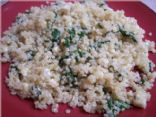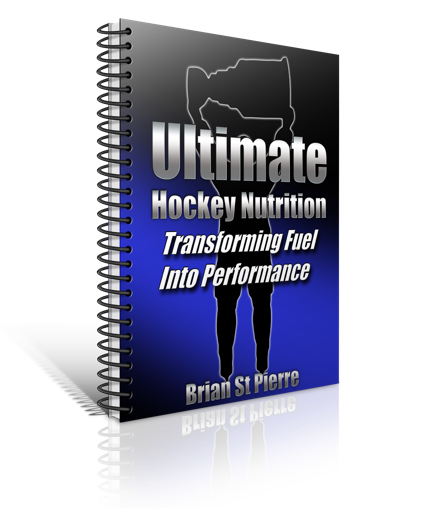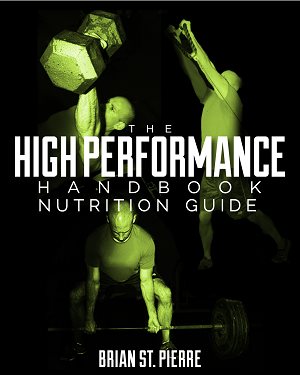Filed under: General Health, Nutrition
One of the biggest barriers preventing people from purchasing and consuming fresh local produce is often a matter of convenience. It is convenient to go to the supermarket and just buy what is there, there is no extra effort involved. You don’t have to find a farmer’s market or shop only at their limited time frames.
It is a one-stop shop and we use it as an excuse to not try harder to find better quality produce. I think it goes without saying that when you eat fresh produce the taste is beyond comparison to most store-bought items. Instead of being picked early and allowed to ripen on the trip to the store, local produce is picked when ripe and sold immediately.
This will provide a vast improvement in taste and a nutrition and is a much more sustainable practice than cross-country shipping of food. However, purchasing this food is easier said than done. People often feel like they don’t even know where to start or where to begin looking for access to local food.

So here is a solution for you – buy into Community Supported Agriculture. If you live in Maine as I do, here is a link to all of the CSA’s in the state. In addition, here is a link to all of the Farmer’s Markets in the state. These resources are now right at your fingertips (and I am sure there are websites like this for most states), so it is time to take action. No more excuses!
In addition people, including myself, often struggle to come up with ways to be more active during our free time. One of the best ideas is hiking, especially as we begin to enter fall. The temperatures are perfect, the views and beautiful and before you know it the leaves will be turning color and really taking it up another notch.
Now again, people often feel like they don’t know where to hike! Fortunately for you (well, for those of you in Maine) here is a link to all of the hiking, skiing, snowshoeing, and biking trails in the state. I am sure that most other states have sites like this as well.

I think it is important that we put information like this to use. Enjoying the outdoors has been shown to decrease stress levels beyond just the benefits from the exercise itself. Stress management is one of the key pillars to long-term health and quality of life.
Eat fresh, eat local and enjoy the outdoors. Simple advice that can make a world of difference in your life.
Filed under: General Health
While my field of study is nutrition, and I am also deeply involved in the strength and conditioning world, there are many more layers to our health than just those two areas. I am interested in improving the long-term quality of my life (and that of my family, and my readers), so from time to time I look into many other things outside my usual scope. Examples would include decreasing plastics, improving sleep quality, stress management techniques, and more.

Now I want to touch on something else – indoor air pollution. According to the EPA “Indoor air pollutants are unwanted, sometimes harmful materials in the air. Indoor air pollution is among the top five environmental health risks.” Among the top 5 environmental health risks, and yet no one talks about this?
In my mind this is a topic that is not discussed nearly enough. Just like the fact that flossing can help to prevent heart disease (and not flossing can increase risk) because of bacteria and inflammation, is not talked about enough.
While giving the full scientific breakdown of the process and totality of the research on the harmful effects of air pollution is beyond the scope of this post, I will touch on a few important elements and steps you can take to decrease your risk. If you really want to dig deep, there is a great article from Harvard Magazine that is quite educational and interesting – Cleaning the Air.
The real concern seems to be fine particles, 2.5 microns or smaller. Larger particles are trapped in the mucous lining of our nose, trachea and bronchi and never reach the lungs. However these smaller particles make it past these defenses and wreak havoc.
The mechanism for the problems they create are not fully understood, but we do know that they increase risk of lung cancer, emphysema, asthma, cardiovascular and heart disease, and Alzheimer’s as well as decreasing lifespan by up to 2 years!
The mechanisms for how these particles cause lung issues are fairly well understood, but how they contribute to cardiovascular and heart disease is not. Here are the hypotheses presented in the article:
“One hypothesis,” says Godleski, “since some of the effects are almost immediate, is that they must be neurally mediated.” Particles may stimulate nerve fibers in the lung. Signals relayed to the central nervous system may change the autonomic balance of the heart in ways that “make it more prone to arrhythmia and other effects, which in turn create the potential for a fatality.”
Another hypothesis suggests that, because particles cause inflammation of the lungs, inflammatory agents produced there may affect the heart in a negative way. Vasoconstrictors such as endothelin, for example, are secreted by the lungs when inflamed. The fact that mortality peaks 18 to 20 hours after the peak in a particle-pollution event (such as a smoggy day in summer) lends some support to this possibility; think of the way a sunburn can develop over time, after you leave the beach.
Finally, particles may pass through the lungs and actually reach the heart directly. This is thought to be the least likely scenario, says Godleski, but there is some evidence for it. Rogers is actively exploring the possibility with high-resolution laser-scanning microscopy.
Read the rest of this entry »
Filed under: General Health
My wife and I have made a concerted effort the past few months to really decrease the amount of trash we create by recycling everything we possibly can. It is amazing how many things we were just throwing away without thinking twice about it.

We don’t have our recycling picked up so we have to bring it ourselves to a sorting center, but in reality it is twice a month job, so it doesn’t take much effort at all. I look back at all of the items I threw away that could have been reused and it makes me wish I had tried a little harder back then.
However, we are making the effort now and that is the best we can do, so that is what I am asking of you guys. Make the effort. Recycle your yogurt containers, vegetable bags, berry containers, Ezekiel bread wrappers, cardboard, newspapers, glass, tin and anything else you can possibly think of.
So many items we purchase can be recycled and kept out of landfills, yet a great many of them end up there anyway. With a little effort we can change that, so lets make it happen.

Our next project to reduce our waste will be to start a compost pile. Things like banana peels, coffee grinds, egg shells and more can be composted, reduce waste and improve soil quality. Sounds like a winning combination to me!
Last but certainly not least, I also wanted to clue you guys in on who might be interested the brand new Muscle Imbalances Revealed – Upper Body. This is a follow up to last year’s awesome Muscle Imbalances Revealed – Lower Body, with contributions from the likes of the esteemed Tony Gentilcore (finally his first product!), Dean Somerset, Dr. Jeff Cubos and Rick Kaselj. If you are interested in presentations on corrective exercise, proper programming, myofascial training, advanced core training, soft tissue modalities and proper breathing strategies then this is right up your alley, so check it out!

Filed under: General Health, Nutrition
While reading my dad’s Men’s Health I came across a rather off-hand comment in there that really struck home with me. While I rarely read the articles in Men’s Health, I do like their recap of nutrition studies and the small blurbs of information in the beginning of the magazine.
These blurbs often inspire blog post ideas and research to look into, so I find it very helpful. In the case of this off-hand comment, it was about coffee consumption. While I don’t recall who made the comment, it was simple but brilliant and made a lot of sense.

It said something to the effect of only using coffee in small bursts to help you get through your day. 8-12oz at a pop will provide you with plenty of caffeine to power through for hours. When you need another pick-me-up, another 8-12oz is all you need.
While seemingly simple, how many people actually only have 8-12oz in one sitting? How many people only get a small coffee at the drive though, in the cafeteria or at home? Most of us do the traditional American thing, if some is good more must be better!
The fact is that having 20oz of coffee will certainly provide you with more caffeine, but there comes a point of diminishing returns. Once you get past the 8-12oz mark, you are simply just making yourself more jittery and jacked up rather than alert and focused. And if you do this 2-3 times per day, the problems are just compounding!
The more coffee you drink, the more you will feel you need. Plus drinking a ton of coffee and caffeine can disrupt sleep patterns, decreasing sleep quality and increasing your need for coffee! It can be a vicious cycle.
Research shows you get the majority of coffee’s health benefits with the least amount of potential side affects with roughly 24oz per day. So three 8oz, or two 12oz servings would be perfect. Any more than that and you start to trend into the territory where excess coffee consumption tends to cause some issues.
Have small bursts of coffee to get you going and enjoy its health benefits without going overboard. Plus you will save money. This will also allow you to get in more tea during the day. It’s a win win win.

In my mind this set up will allow a nice 12oz of coffee at breakfast, say 5:30am. Then another 12oz in the mid-morning, say 9:30am. Well now you are carried through into the afternoon, unfortunately this is where some people can get a little sleepy. Unless you absolutely are crushed, I recommend against coffee in the afternoon, as that much caffeine then can interrupt sleep patterns.
Instead you can have a delicious cup of green tea after lunch at 1:00pm, which has the added bonus of keeping you satisfied for an increased amount of time (another tidbit picked up from MH), preventing snacking before dinner. Then another green tea at 3:30 or 4:00pm to finish out the day strong.
While green tea does have some caffeine to help perk you up, it also contains calming elements like L-theanine which will help you focus, and won’t disrupt your sleep patterns like coffee will. Not too mention its plethora of other health benefits.
Now you get the best of both worlds with a smart and efficient method for increased energy and focus. Let me know what you think!
Filed under: General Health, Nutrition
I just wrapped up my first clinical rotation on Friday, and it felt good to clear another hurdle. I am looking forward to the day when I can just get back to working with people 1 on 1 in a private setting. I am enjoying the hospital experience, but I would choose doing what I do over that any day of the week.
Having said that, I have learned quite a bit. To be honest clinical dietetics was not a strong suit of mine. It was not something I was terribly interested in nor made an effort to learn a lot about, so this has been good for me.
While many nutrition experts bash RD’s (I am guilty in the past), it is important to keep their jobs in context. A clinical dietitian is not working with a healthy individual 99% of the time. People don’t get admitted to the hospital because they want to learn about a diet for CHF.

People get admitted to the hospital because they are sick or injured, and most of the time this makes it difficult for them to consume adequate calories and protein. Due to this fact, RD’s monitor patient’s oral intake and will encourage eating adequate protein and calories. However this is not always easy for the patient, and this is when RD’s recommend foods like Ensure or Carnation Instant Breakfast, because getting in calories and protein is essential for helping that patient to heal and recover.
Now this isn’t something I would recommend to a healthy individual, but it is all about the context. The only issue is many RD’s take their hospital mindset and apply it to the population as a whole, which I think is a mistake and where the criticism arises. But it is important to remember how much good they do and the integral role they play in patient recovery.
With that little diatribe out of the way, here is what I have learned in my first go-round. I have learned A TON about medications and medical terminology. While I have studied medical terminology in school, it is nothing like seeing it first hand. Reading doctor’s notes can be a monster of a challenge unless you are able to quickly learn acronyms and terminology.
I have also learned A TON about medications. The sheer number of meds given to patients in the hospital is staggering. Trying to learn them all, their purpose and their potential side effects and nutritional implications is no easy feat! I am still working on this one.

Lastly, I have also learned a lot about nutritional implications for people with specific diseases. For example COPD. Simple recommendations like eating small frequent meals rather than large meals, because large meals will really fill the stomach, potentially putting pressure on the diaphragm and making it even more difficult to breathe for people who already have trouble as it is. Simple, logical and something I had never thought of.
So that’s what I have learned so far! Don’t forget today is the day of Alwyn Cosgrove’s FREE webinar The Death of Personal Training. If you anyway involved in the fitness industry, whether you own your own facility or not, this webinar will provide you with the tools to drastically increase your success and profitability. It starts at 8pm EST, so don’t be late.
Filed under: General Health, Nutrition
I have written before about phytic acid and its work as an anti-nutrient. Phytic acid is present mostly in grains, legumes, nuts and seeds and binds with important minerals like iron, zinc, calcium and magnesium as well vitamins like niacin and prevents their absorption. Phytic acid will also decrease the digestibility of the protein and carbohydrate content of the food.
Now some question whether this is anything to worry about, however history has shown us that phytates can have serious consequences. A perfect example would be the classical dwarf syndrome in Egypt. People there have often consumed large amounts of unleavened, which has led to zinc deficiencies and growth impairment in children. This clearly is not something to just brush aside.
This is why the vast majority of early cultures who consumed these foods sprouted, fermented and/or cooked these foods, drastically decreasing anti-nutrient content, increasing mineral, protein and carbohydrate digestion and absorption.

However, many people have taken this too far, and believe that since a diet too high in phytic acid and other anti-nutrients is harmful, that any intake of anti-nutrients is harmful and this does not appear to be the case. Its like believing that since you can die from too large of a water intake that you shouldn’t consume any water.
These ideas are similar to the change in the thought process on fiber many years ago. It used to be believed that fiber was a rather inert food component, and was only known to limit the absorption of some nutrients, and was once considered an anti-nutrient as well. Today we certainly know that fiber plays a positive role in helping to prevent many ills of human health.
Research continues to show that intake of whole grains, legumes and nuts are linked with a plethora of health benefits. Since these foods all contain anti-nutrients it would make sense that there might be some benefit to their consumption. New research is showing this to be the case. A perfect example would be phytic acid preventing the absorption of iron, as excess iron can lead oxidative damage.
Phytic acid and other anti-nutrients (saponins, trypsin inhibitors, and lectins for example) may play a role in preventing chronic diseases like cancer, cardiovascular disease, diabetes and more. It seems that these anti-nutrients have a U-shaped curve of benefits (like most nutrients). Little to no consumption might be inconsequential, a moderate amount may be beneficial, and an excessive amount is harmful. The problem with this is knowing where our consumption lies on that curve.

I still believe it would be in the best interest of human health to keep intake of these nutrients in check. Consuming foods like sprouted grains (which reduce but do not totally remove phytic acid), rubbed or washed quinoa (reduces but does not totally remove phytic acid and saponins), and soaking legumes (reducing but not eliminating lectins) will still provide you with an intake of these anti-nutrients that will still provide health benefits, but it will also increase their digestibility and decrease the potential negative consequences of these foods.
Fortunately this also means that we do not have to strictly avoid all foods that contain anti-nutrients (like many in the Paleo community would have you believe). If small amounts of phytic acid, lectins and enzyme inhibitors are beneficial, then that means we can actually eat moderate amounts of grains, legumes and other Paleo-unapproved foods without worry, especially if they are properly prepared. Enjoy!
Filed under: General Health, Nutrition, Training
I recently came across a new dessert that I found rather interesting. A reader sent me a link asking my opinion on the item (to be honest I get a lot of my content from you guys – thanks!), so I had to check them out.
Yasso Frozen Greek Yogurt are like giant popsicles of frozen yogurt, but better. They contain far less sugar than the usual large bar like this, only 13g, have 6g of quality protein per bar, contain only 70 calories and also have the benefit of live and active probiotic cultures. Not too shabby for a sweet dessert huh?

Now they may not be the world’s healthiest food, but to satisfy that sweet tooth on a hot summer day, you could make a lot of far worse choices!
In another vein Alwyn and Rachel Cosgrove will be hosting a free webinar next Monday the 22nd at 8pm EST. These guys know a ton about increasing the effectiveness of your business, and in fact the National Fitness Business Alliance (NFBA) states the they run the most profitable gym per square foot in the country.
So not only are Alwyn and Rachel top-notch trainers and business owners, they are good people and who want to share their blueprint for success with those willing to listen. They are putting on a free webinar called The Death of Personal Training. This webinar will cover:
- why it’s the scariest and greatest time in the fitness industry to open and run a gym
- how the fitness business model has drastically changed throughout the years and if you are not changing with it, you will be out of it soon
- 5 steps to not only survive but dominate your marketplace
- the turning point in his career that will help you take your business to the next level
I know I will be watching it, will you? Sign up now.
Filed under: General Health, Nutrition, Recipes, Training
Before we get started today I just wanted to remind you guys that today is the last day to get $100 OFF the Fitness Business Blueprint. If you own your own fitness business, or are thinking about one day owning one, then this is a must-have resource for you. It is by far the most comprehensive resource on the market, written by guys you have built incredibly successful facilities from the ground up.
Get a copy of the Fitness Business Blueprint today before the sale ends!

The wife of my best friend sent me a new recipe that they tried and loved. It is incredibly simple and looks so good that I wanted to share it with you guys. It combines delicious and nutritious foods into an explosion of awesomeness.
Quinoa with Spinach and Feta Cheese
Ingredients:
- 1/2 cup uncooked quinoa
- 1 tsp extra virgin olive oil
- 2 cloves garlic, sliced very thin
- 1 cup fresh spinach
- 1oz feta cheese

Directions:
Rinse the quinoa in a strainer. (Use a sifter if you don’t have a strainer that’s small enough.) In a small saucepan, add the quinoa and 1 cup of water. Bring to a boil over high heat, then cover and reduce heat to simmer until water is absorbed, about 10-15 minutes.
Meanwhile, heat a skillet over medium heat and add the olive oil and garlic. Cook the garlic in the oil until the edges of the garlic turns very light brown, being careful not to burn the garlic (reduce heat to low if necessary). When the quinoa is done cooking, add it to the skillet along with the spinach. Stir it together until the spinach wilts. Add the crumbled feta cheese and stir to combine. Makes 2 servings.
Nutrition Facts:
- Calories – 233
- Fat – 8.5g
- Carbs – 32g
- Fiber – 3.5g
- Protein – 8g
Now this can either be a side dish, or you can incorporate your protein source of choice with it. She added local grass-fed steak, cilantro and tomatoes and actually put it all into a wrap. Sounds extra delicious to me!
Give it a try and let me know what you think.
Filed under: General Health, Nutrition, Training, Weight Loss
How many small business owners get any business training? Unless you went to school for business, most likely not much. How many dentists, electricians, doctors, painters, chefs, nutritionists and trainers/strength coaches get any direction or quality information on how to run their business? Not many.
While being good at what you do is imperative, and without that it doesn’t matter how good your business skills are, it still will not maximize your success. I’m not just talking about making money, I’m talking about the amount of people you can work with and provide a quality service too. If you do not have a good business plan you will fail or at least fail to thrive, regardless of your skill set.

Fortunately for all of us in the fitness industry there is hope. Eric Cressey, Mike Robertson and Pat Rigsby have worked together to create an incredible product, the Fitness Business Blueprint.
It covers things on the actual training side – intake/assessment, program design, coaching, etc as well as thoroughly providing you with a blueprint for business success. Pat is one of the most successful business coaches in the fitness industry, and has helped thousands of strength coaches and trainers create thriving personal facilities.
EC and MR both own their own incredibly successful facilities and have learned tons of valuable lessons along the way. I was personally on the ground floor of Cressey Performance as it grew from a small facility with 37 clients to a 7,600 sq ft comprehensive training center with several hundred clients. I was able to witness the implementation of new and improved business models as the EC and the CP team grew and got better. This isn’t advice from some internet expert, this is advice and strategies from guys who have successfully done what so many of us want to do. This product will allow you to stand on the shoulders of giants.
The Fitness Business Blueprint is a comprehensive product to help any trainer or strength coach finally break out of the big box gym and start running their own place, work their desired schedule, and make their desired income, and it is for sale right now!
Good luck!

Filed under: General Health, Nutrition
A reader sent me a link to a NY Times blog post about a project being done by the University of California at Berkeley of designing a better food label. While this project is not officially a part of the redesign effort, it has brought in a ton of new ideas that the FDA will likely consider.
The panel of judges included Michael Pollan, author of The Omnivore’s Dilemma; the consumer health activist Michael Jacobson; Dr. Robert Lustig, a San Francisco pediatrician and fructose extremist; Laura Brunow Miner, a San Francisco graphic designer; and Andrew Vande Moere, a Belgian design professor.
Here is the winning label design from this competition:

I do think that Food Labels need an overhaul, but it is going to be difficult to make one that pleases everybody. Just because a snack is high in fat does not mean it is unhealthy or needs a red flag. Other label designs assigned letter grades or used the Glycemic Index, which I don’t necessarily think will work either. The GI is rather irrelevant, and letter grades are too arbitrary. Who is going to determine the criteria for grading?
On top of that, the label is currently in black and white, and very cheap to print. Creating these beautiful brightly colored labels might be more attractive, but they will most certainly be more expensive, and in reality, will they be any more helpful?
Check out that blog and the other entries and let me know what you think!



















Posted on August 31st, 2011 by Brian St. Pierre
5 Comments »